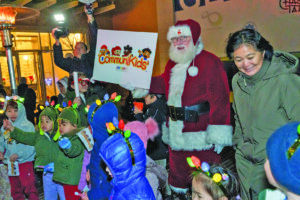Demographic Challenges Mulled by City Council
According to a study by the Steven S. Fuller Institute at George Mason University, there will be an anticipated increase in housing units in the City of Falls Church of 42 percent in the next decade, resulting in a 23 percent increase in the City’s population above its current 14,600 level. Also up significantly will be the number of jobs and the average income of City residents.
This was the latest proposed update on the demographics chapter of the City’s comprehensive plan that will undergo a review by City boards and commissions in the next months prior to expected adoption in June.
The population increase is expected to be mostly in the apartments currently under construction in the new Founders Row 2, Broad and Washington and West End projects, with more in the pipeline. A predominance of the City’s population is now living in such units, over the City’s previous domination by single family home dwellers.
The upside of all this is that while Fairfax County is contemplating a four cents (per $100 of assessed valuation) or higher tax rate increase, the City of Falls Church will experience nothing like that, although it is not known for sure yet what City Manager Wyatt Shields will recommend to the Council next month when he introduces his recommended budget for the coming fiscal year. Observers note however, that along with the 13 cent tax cut City residents enjoyed two years ago, another round of robust rate cuts will be on tap for the next year or two here resulting from the current pattern of economic growth.
The City’s median household income grew by 35 percent in the recent period, double that of neighboring Fairfax County at 17 percent.
Thirty six percent of homes in Falls Church are occupied by households with children, up by 31 percent since 2012.
With employment gains in three of the City’s four largest industries (education/health, trade/transit and leisure hospitality), but professional and business services have been declining since the big hit taken in 2013.
In the context of this, the City is committed, by its vision statement, to building an inclusive and sustainable community, with commitments for more affordable housing and public facilities and services.
Presenting all this data to the City Council at its Monday work session were chief planner Paul Stoddard and senior planner Emily Bazemore, who presented remotely.
Of the 6,500 homes in the City, 1,000 were added in the last 10 years with many more in the pipeline. Over half the homes are now in multifamily buildings even as the percentage of families with children has increased. About 25-36 percent of homeowners are “cost burdened,” (with seven percent severe). That means having to spend more than 30 percent of total income on housing alone. And 35 percent of renters are “cost-burdened” (with 15 percent severe).
Members of the City of Falls Church’s Citizens Advisory Commission on Transportation and Environmental Services Council have been invited to attend next Monday’s meeting of the Falls Church City Council to sit in and advise in response to a presentation by the Northern Virginia Transportation Commission (NVTC) on progress with its Envision Route 7 bus rapid transit project. The project, years in the making, will eventually provide rapid bus transit with special designated lanes from Columbia Pike and up Route 7 through Falls Church, with a detour to the East Falls Church Metro station.
The detour involves heading to the Metro station on Roosevelt Boulevard and returning to Route 7 (Broad Street) down N. Washington St. (Rt. 29).
At its work session this week the Council began a long-awaited exploration of the public art in the Council chambers of City Hall. The portraits have for years been of all white males and there has been a growing sentiment that that should change, especially since the Council, itself, is now composed of six women and one male.
Council member Caroline Lian took the lead at the work session to stress the need to make sure that diversity, equity and inclusion are the hallmarks of the City’s housing policy, including for new units that may be developed in the transitional zones and for accessory dwelling units for which the Council is expected in the coming months to offer great incentives.












